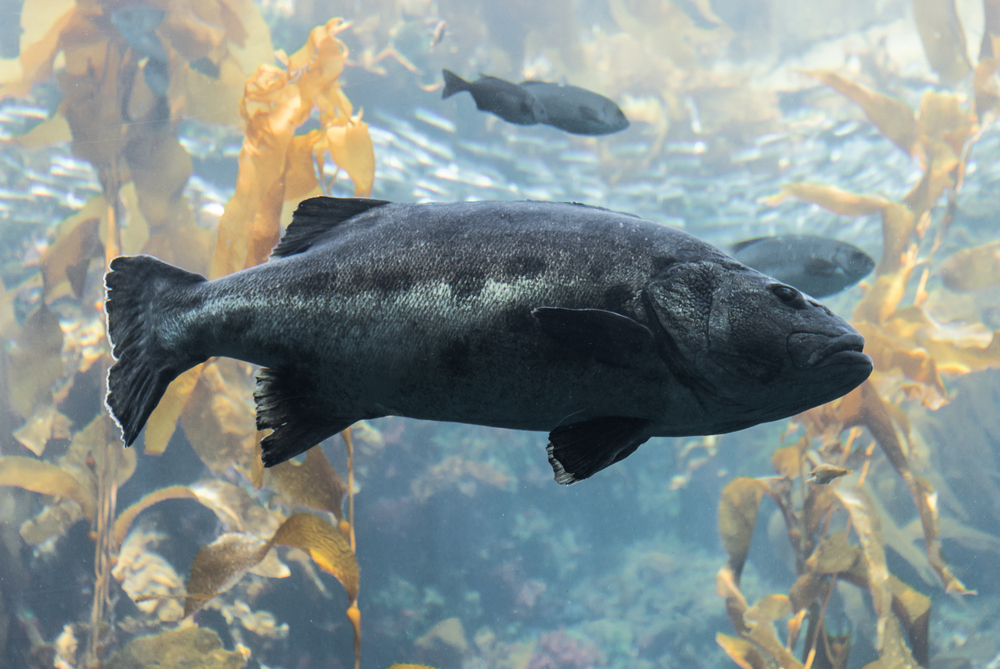Giant Black Sea Bass at La Jolla Cove
Giant sea bass, also known as black sea bass, is large fish that belongs to the wreckfish family. It can be found in the northwest Pacific Ocean. Giant sea bass is bottom-dwelling creature that inhabits rocky and sandy bottoms on a depth from 110 to 150 feet. It spends most of its life in dense kelp forests and near the rocky reefs. Uncontrolled fishing and pollution of the water resulted in drastic decline in the number of giant sea bass in the ocean. Commercial and recreational fishing of giant sea bass are prohibited by law since 1982. Despite great conservation efforts, giant sea bass is still critically endangered.
What Makes Giant Black Sea Bass AmazingGiant sea bass can reach 7.45 feet in length and 563 pounds of weight. The color of the body depends on developmental stage. Juveniles are bright orange colored and covered with black dots. Adults have bluish black or dark grey back covered with large black spots. Bottom side of the body is white colored. Giant sea bass can change color of the body to inform other members of the group about potential danger (color of the body is used for communication). Transition from black to light grey color (or exposure of white mottling) happens in a blink of an eye. Giant sea bass has robust body and large mouth filled with small teeth. It has prominent, notched dorsal fin and broad, flat tail. Giant sea bass is a carnivore (meat-eater). Its diet is based on various types of fish, crustaceans and octopuses. Giant sea bass feeds on the sea floor. It widely opens its mouth and collects prey like a vacuum cleaner. Giant sea bass can swim fast but only short distances. Giant sea bass is very curious creature. It freely approaches divers and swims near them (investigates them). Giant sea bass spends summer in the shallow water and migrates toward deep waters in the winter. The only predators of giant sea bass are great white sharks and humans. Reproduction of Giant Black Sea Bass Large groups of giant sea bass can be seen from June to September, when mating season takes place. Giant sea bass have external fertilization (males and females release their reproductive cells directly into the water). Females are able to produce up to 60 million eggs. Fertilized eggs hatch after 24 to 36 hours. Larvae spend first month of their life near the surface of the water. They feed on plankton. After that period they migrate toward the sea bottom and live on a depth of 40 to 70 feet until they become large enough to survive in deeper waters. Giant sea bass can survive around 70 years in the wild. To observe these amazing creatures at their natural habitat call (858) 397-8213 to reserve or book online |


